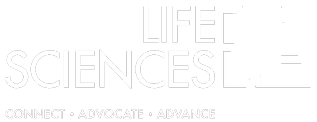Employers see opportunity to drive HSA enrollment despite making modest contributions to plans
United Benefit Advisors, the nation’s leading independent employee benefits advisory organization, finds that employers continue to seek health care cost savings through consumer-driven health plans (CDHPs) with health savings accounts (HSAs), and the less popular health reimbursement arrangements (HRAs). In a new Special Report: How Health Savings Accounts Measure Up, UBA takes a deeper look into which aspects of these accounts are most successful, and least successful, broken down by industry, employer size, and region.
“Health care costs continue to rise, so employers continue to use cost savings tools like HRAs and HSAs, in order to provide affordable benefits to their employees. Until we address the real problem driving health care costs – the cost of care itself – we expect to see this trend to continue,” says Carol Taylor, UBA committee member and benefits advisor with D & S Agency, a UBA Partner Firm.
The difference between HRAs and HSAs tends to lead to very different usage, finds UBA. HRAs can sometimes be complicated to implement if they do not have a simple structure that employers and employees can understand, which in some cases has led to a flatter growth rate. HSAs, on the other hand, are becoming more accepted among some groups, contributing to their increase in prevalence and enrollment.
According to the 2016 UBA Health Plan Survey, 35.1 percent of all plans offer an HSA or HRA, which is up from 34 percent in 2015, a 3.2 percent increase. An HSA is offered in 24.6 percent of plans, a 21.8 percent increase from five years ago. HSA enrollment is at 17 percent, a 25.9 percent increase from 2015, and nearly a 140 percent increase from five years ago. The average employer contribution to an HSA is $474 for a single employee (down 3.5 percent from 2015 and 17.6 percent from five years ago) and $801 for a family (down 9.2 percent from last year and 13.7 percent from five years ago).
The prevalence of HRAs, however, has remained flat over the last five years at 10.5 percent, with HRA enrollment at 10.7 percent, up 23 percent from five years ago, says UBA. Survey data shows the average employer contribution for an HRA is $1,810 for a single employee and $3,545 for a family, up approximately 2 percent from 2015.
Generous HSA contributions, like those found in New England, among small employers (25 to 49 employees), and within the education industry certainly play a role in their impressive enrollment successes. However, North Central employers have achieved high enrollment with average contributions. Very large employers have made surprising gains in attracting employees to HSA plans (they lead with 19.1 percent enrollment on average) with below average contributions ($413 for singles).
Though these large groups (1,000+ employees) lead in enrollment, it is interesting to compare enrollment with prevalence rates. Generally, average prevalence and enrollment rates for HRAs both hover around 10 percent. Average HSA enrollment, however, is 17 percent compared to a 24.6 percent prevalence rate. The gap is more striking among these large groups who, though they have the above average 19.1 percent enrollment rate, have a 41 percent prevalence rate, indicating an opportunity to improve employee interest in these plans.
“The best course of action is to increase employee education about the use of HSAs and the benefits of having one in addition to recommending that our employer groups partially fund the HSA as well to assist with their high deductible,” says Terriann Procida, UBA Board Member and Founding Partner, Innovative Benefit Planning, LLC, a UBA Partner Firm.
Why an HRA
“The HRA component of a health plan is essentially self-funded by the employer, which gives the employer a lot of flexibility, and can be tailored to their specific needs or desired outcomes,” says Elizabeth Kay, UBA committee member and Compliance & Retention Analyst at AEIS Advisors, a UBA Partner Firm.
“For example, if an employer has a young population that is healthy, it may want to use an HRA to pay for emergency room visits and hospital in-patient stays, but not office visits so the employer can help protect its employees from having to pay those ‘large ticket items,’ but not blow their budget. While an employer with a more seasoned staff, or diverse population, may want to include prescription drugs as a covered benefit under the HRA, as well as office visits, hospital in-patient stays, outpatient surgery, etc. Or, if an employer needs to look at cost saving measures, it may want to exclude prescriptions from being eligible under the HRA.”
By Bill Olson
Originally Posted By www.ubabenefits.com




